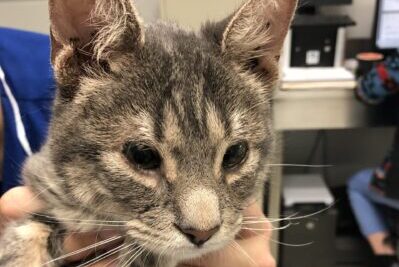World Spay Day 2012

World Spay Day 2012
February 28th was World Spay Day, the grand finale of Spay/Neuter Awareness Month.
Spay Day USA, started in 1995, originally focused on the need to spay and neuter feral cats. It now is a worldwide event focusing on eliminating pet overpopulation everywhere.
Why is Spay Day such a big deal? My pet is spayed.
Spaying females and neutering males is a 100% effective method of contraception in dogs and cats. By preventing unwanted litters of puppies and kittens, we decrease the number of animals ending up in shelters. Despite the effectiveness of this surgery, six to eight million dogs and cats enter animal shelters every year and sadly only about half find a forever home. Cats in shelters fare worse than dogs; only about 30% of cats from shelters find a forever home. This grim statistic is why the TNR, or trap, neuter, release programs are so important. Approximately 80% of pet cats are neutered, but only about 3% of feral cats are. Every spring, feral cats produce large numbers of kittens which frequently end up in shelters, but are too wild for adoption to a family.
Cats can’t add, but they can multiply!
This is a great one liner from an ASPCA t-shirt and it explains exactly why TNR programs are important. In a TNR program, feral cats are humanely trapped and then neutered by licensed veterinarians. Before they are released back into their colony, a ¼-inch of the tip of the left ear is removed. This provides a visual marker of neutering and prevents a cat from being re-trapped and taken for neutering a second time. Cats receive a rabies vaccination at the time of neutering. Because TNR cats are vaccinated against rabies while they are trapped, these programs also help to protect the humans and pet animal against contracting rabies.
Back in their colonies, TNR cats can no longer reproduce and fewer kittens are born, reducing cat overpopulation.
You can help
The pet overpopulation problem is a community problem and requires the entire community, government officials, animal welfare/rescue organizations, wildlife agencies, and concerned individuals to work together to create a solution. A TNR program is only one component; others include raising community awareness about the problem, securing funding for programs, and putting in place legislation for the good of all.
Want to know more about spaying and neutering? Click here to view an excellent series of videos on spaying and neutering dogs and cats.
________________________________________________________
This may also be found in the Tales from the Pet Clinic blog on WebMD.com.
For over a century, The Animal Medical Center has been a national leader in animal health care, known for its expertise, innovation and success in providing routine, specialty and emergency medical care for companion animals. Thanks in part to the enduring generosity of donors, The AMC is also known for its outstanding teaching, research and compassionate community funds. Please help us to continue these efforts. Send your contribution to: The Animal Medical Center, 510 East 62nd Street, New York, NY 10065. For more information, visit www.amcny.org. To make an appointment, please call 212.838.7053.


































